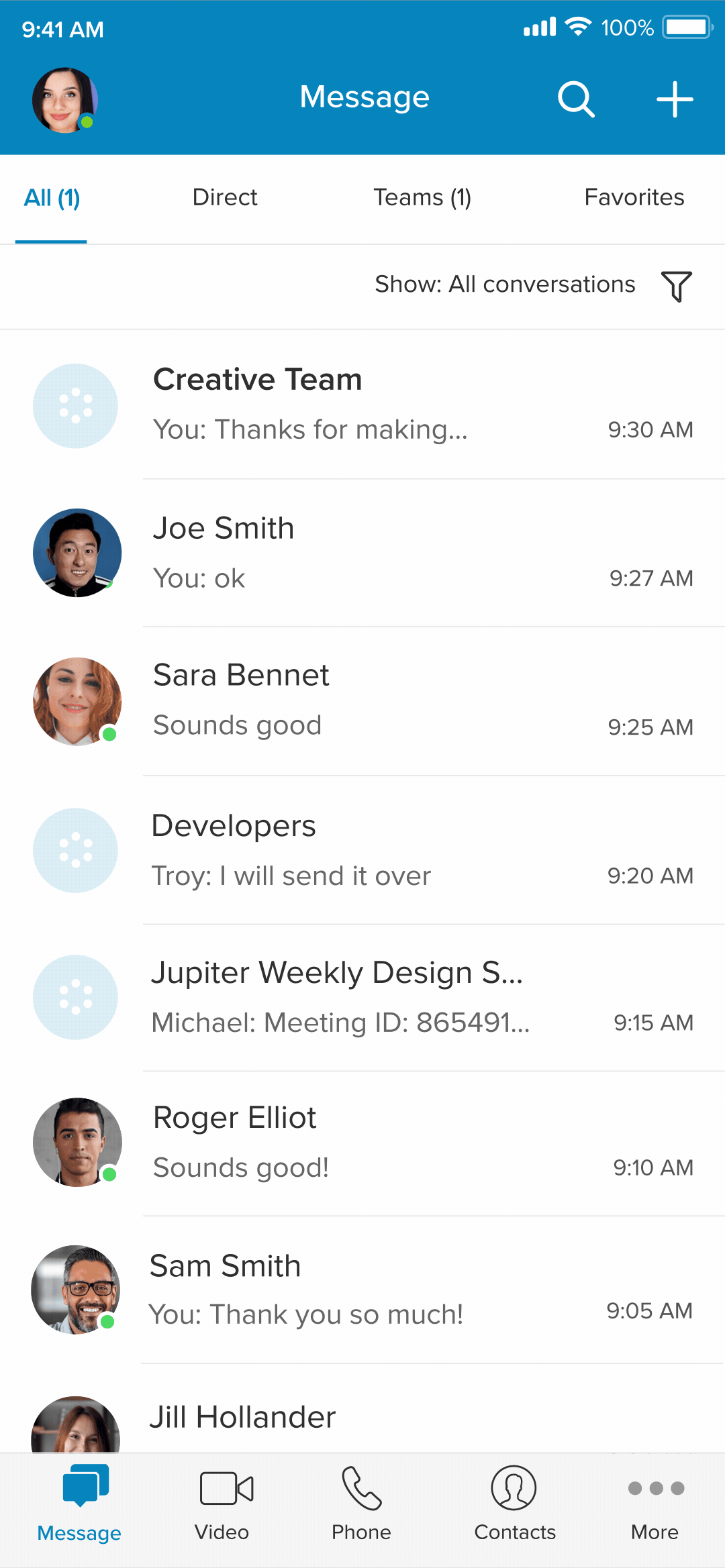The internet is bursting with all kinds of small business productivity tips. It seems like everyone has an opinion on “the best way” to do just about anything you can imagine.
But how do you know which of these “hacks” should be a priority in your small business, and where should you start? We’ve rounded up 10 of the top tips to get you started: things you can do to streamline your workflows without busting your budget.
Let’s get started:
Why improving productivity is crucial for small businesses
Running your own business can be challenging. Unlike long established players, you’re doing everything on your own with little backup. Every minute in the day counts, and the more time you can spend growing your customer base, the better.
That’s why it’s so important to make sure you’re working smarter, not harder, and streamlining clunky workflows. So let’s look at some easy ways to get more productive.
10 productivity tips for small businesses
1. Prioritise your tasks
As a small business owner, you’ll have plenty of daily, weekly, monthly, and yearly tasks keeping you busy. So, including non-critical jobs on your task list can lead to procrastination and affect your business capabilities.
Rather than occupying yourself with less vital chores, prioritise your tasks to identify the urgent points that need immediate action. Do this by creating a list and identifying which tasks your business really needs to survive. For instance, paying suppliers weekly is an important task you can’t postpone, or your business will come to a standstill.
Prioritising your tasks lets you improve your time management and streamline your workflows. It also builds consistent habits and ensures you’re focusing on the right areas to boost your business outcomes. Simple tools like Google Calendar can help with this.
2. Use collaboration software to streamline communication (and pay bills)
The modern workspace isn’t just office-based. With growing numbers of remote workers and virtual teams, a workday can mean something different to team members needing to work together from various locations.
That’s where collaboration software comes in handy. Your team can stay connected, no matter where they work, thanks to cloud-based communications. Today, there are lots of options out there that combine the various communications software you need in one app. If all of your various tech is through a single provider, that’s fewer vendors to keep track of when it’s time to pay the bills.
The right collaboration software should include:
- Team messaging
- Video conferencing
- Easy file sharing and storage (take a look at the gif below to see what easy file sharing looks like in action)
- Task management
- Bonus: your business phone folded in with the rest of the features, so all your communications are in one place.

(Psst: RingCentral does all of this, and more. That’s why small businesses love us!)
3. Delegate less critical tasks
At the end of the day, delegation is vital to increase productivity, regardless of whether you’re a solo entrepreneur or you have a team of employees at your disposal (either on-premises or working from home).
Handing tasks to employees lets you get more done with your limited time, as employees can work in tandem instead of waiting for you to finish. Additionally, outsourcing specialised tasks to domain experts accomplishes them quicker. It boosts efficiency and productivity.
With simpler tasks, you can delegate any you need, such as writing blog posts, email templates redesign, or creating white papers for your website to a member of your marketing team. This is also an ideal opportunity for less experienced team employees to gain an understanding of new roles and responsibilities.
4. Automate processes where you can
Every business has repetitive and mundane manual tasks. While these tasks are critical to the functioning of your business, such as email marketing, they’re time-consuming and slow down your workflow.
By investing in automation software, you can oversee a digital transformation of your business architecture that will save you and your employees time, boosting your small business productivity.
For example, instead of manually posting digital marketing campaigns across social media, you can use apps to schedule posts days, weeks or months in advance.
These new technologies improve functionality allowing for better multitasking and letting your employees focus on more complex tasks. Additionally, many SaaS automation tools can integrate well with your technology architecture, meaning low implementation costs.
Other tasks suitable for automation include:
- Call routing/voice response menu
- Invoicing
- Payroll
- Data centre backups
- Marketing
- Tax calculations
- Sales automation
5. Combine your tech for less toggling
According to a recent report, employees toggle between 12 different apps each day. Between email and documents, team messaging and video chats, you can see how all the different apps add up, even for small businesses. That’s real time, and money, lost.
Technology is supposed to help us be more productive, not stand in the way. That’s why it’s a great idea to get more of your apps living in the same place.
Here are two tricks to get a more streamlined app stack:
Find an all-in-one cloud communications tool that can grow with you
There are so many communication channels today, and that could mean your team toggles between these separate channel apps all day, every day. Luckily, there are some helpful apps that collapse your biggest communication channels into a single, easy-to-use app. You’ll get your business phone, team messaging and video conferencing all in the same app.
Here’s how RingCentral’s all-in-one app looks, from desktop and mobile devices alike. You can easily flip between voice and video calls, and read all of your team messages, too!
Use app integrations to combine even more workstreams
Do you use a CRM to track all your customer data? What about file-sharing and productivity apps like Google Workspace and Trello? The most popular business apps today can often plug in smoothly to your more central software. That means less toggling and more productivity for your small business team.
For example, RingCentral integrates with Salesforce (and over 100 other apps), so you can make and record calls right within Salesforce:
6. Build a positive working environment
When employees feel valued, their satisfaction increases, and they’re motivated to complete their tasks. So, to boost productivity and create a successful business, you must ensure you build a healthy work environment into your business model.
Don’t worry: this doesn’t mean installing on-site gyms or building a company campus, like Google or Facebook. It’s about acknowledging employee contributions and rewarding them in any way you can, big or small. Consider things like:
- Office parties
- Team dinners
- Flexible working options, like work-from-anywhere
- Training and development
- Employee-of-the-month
7. Create SMART goals
Your business goals are vital to building a productive small business. It’s how your employees understand your business vision and how they can contribute to it. Whether you’re a startup or a one-person show, it’s vital your goals are realistic, well-defined and in line with your business strategy.
Therefore, make your goals SMART:
- Specific
- Measurable
- Achievable
- Realistic
- Timely
For example, if you want to improve IT infrastructure or IT architecture, it’s not enough to just say it. A SMART goal might be to train an employee over six months to manage IT infrastructure and architecture.
In the first instance, the goal is vague and has no start or endpoint, leaving it open and likely postponed in place of more urgent tasks. In the second, it has a specific aim; the amount of time and end goal, so it’s likely to be actioned quickly.
8. Monitor, analyse and adjust your goals
It’s vital to monitor a SMART goal to ensure you’re on track to accomplish it. Similarly, to ensure maximum business productivity and meet your goals, you must measure employee performance.
You can do this by using KPIs and monitoring vital metrics to identify productivity issues and resolve them, such as:
- Task time tracking
- Project completion time
- Revenue-per-employee
- Proficiency levels
Using analytics tools, you can see which employees struggle to keep up with their workload and the tasks taking longer than usual. It lets you develop new strategies or create training plans to improve performance and productivity in those areas.
By monitoring employee and business performances, you can improve your decision-making methodology and ensure you don’t stray from your business roadmap.
9. Learn from your team
Monitoring your employees tells you where a process has gone wrong, but not why. Understanding this involves talking to your team and learning from their experiences.
But, getting your workers to open up can be difficult. Employees may not want to admit they’re struggling with specific workloads or tasks, such as project portfolio management, especially if business practices or organisational structure is at fault. Consider using anonymous surveys or designating a representative to relay the issues to you.
Your employees move the needle in your business. If they face issues, that needle will slow down to zero. Listening to them and taking their advice will increase productivity and highlight many other problems you might not even be looking for, such as company culture, engagement or how flexible working improves productivity.
Listening can (and should) happen both in informal settings, like on-the-fly chats, and more formal and confidential environments, like regular reviews and employee surveys.
10. Structure your day in chunks
Your time is important. As a small business owner, you often have various tasks that need your attention. Jumping between different tasks or constantly checking emails as they come in can break up your workflow, making it difficult to tick items off your to-do list.
By structuring your day in chunks, you can stay focused for short periods on one task. It improves your time and task management, ensuring you spend enough time on each task and driving your productivity.
For instance, you can carve up your day into half-hour chunks and assign one task per chunk, like this:
- Creating business documents like risk management plans
- Checking emails
- Updating business social media like LinkedIn posts
- Creating posters or ad campaigns
By doing this and taking regular breaks, you can create daily habits to help you clear your to-do list without getting distracted or leaving tasks unfinished.
Small business productivity: Make the most of your time
There are plenty of ways to improve productivity in your small business especially when using the right technology.
By using productivity hacks like the ones listed here, you can change your working habits for the better and increase the efficiency of your workforce.
By prioritising tasks, making SMART goals, monitoring your business performance, and listening to your employees, you can develop strategies and employ new technologies to do more work in less time. It will help your business do more, increasing revenue and boosting growth.
Originally published 27 Jun, 2022, updated 28 Jun, 2022





